Star Wars: Force and Destiny: Beginner Game by inklesspen
WEG WotC FFG
Original SA post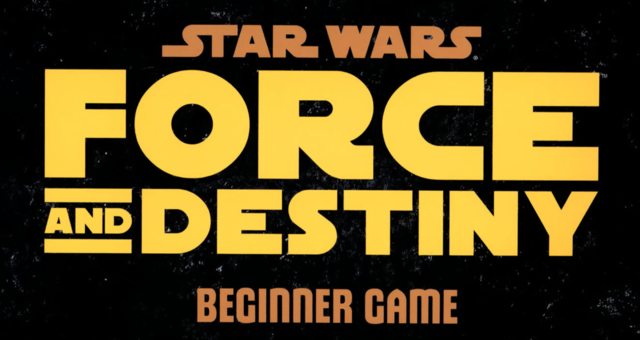
WEG WotC FFG
If you are reading this on the Internet (as opposed to from a yellowed printout you found in a data cache while seeking a respite from your post-apocalyptic hellscape), very likely you know what Star Wars is, so I won't bother regurgitating it here.
There have been three major groups of Star Wars RPGs published over the last few decades. From 1987 to 1999, West End Games published the first one, which later became the D6 System . From 2000 to 2012, Wizards of the Coast published a RPG based on their d20 System; the "Saga Edition" released in 2007 brought the game a little closer to D&D 4e's simplicity.
But we don't care about any of that. In 2012, Fantasy Flight Games released a beta version of Edge of the Empire , the first game in their Star Wars line. This line includes three games which all use the same system (with one unique stat per game); characters from one game's rules can join a campaign running under another ruleset very easily.
-
Edge of the Empire
is intended for scoundrel-type characters: smugglers, bounty hunters, etc. The cover art shows Han and Chewie. The custom stat is Obligation.
-
Age of Rebellion
is intended for members of the Rebellion: ace pilots, diplomats, generals. The cover art shows Luke (in his pilot suit) and Leia (in her white robe). The custom stat is Duty.
-
Force and Destiny
is intended for Force-sensitives who may or may not actually be Jedi. The cover art shows Darth Vader and Obi-Wan. The custom stat is Morality.
Each of the games provides a core book, a GM's guide and screen, a variety of supplements, and a "Beginner Game" which retails for US$30. We're going to take a look at the Beginner Game for Force and Destiny , though I'm told the basic structure of the beginner games is the same for all three.
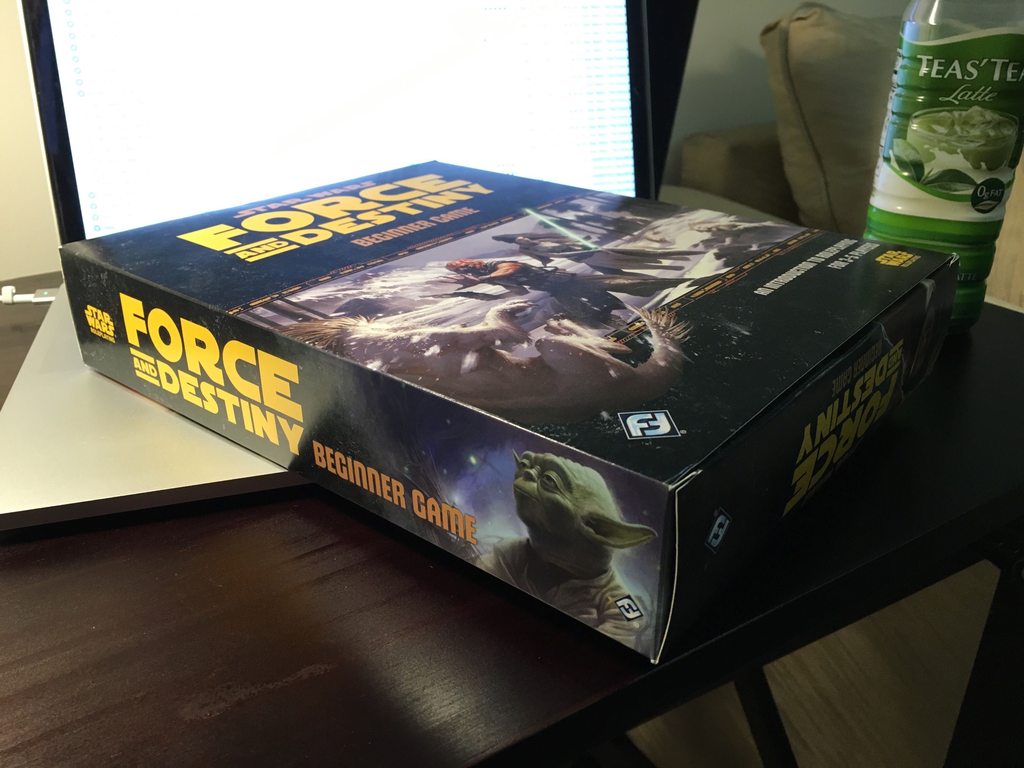
The front of the box shows two of the pregenerated characters, while the sides show Yoda, Obi-Wan, Vader, and Palpatine (none of whom feature in the game). The box itself is made of really flimsy cardstock; it will probably not hold up to repeated opening and closing.
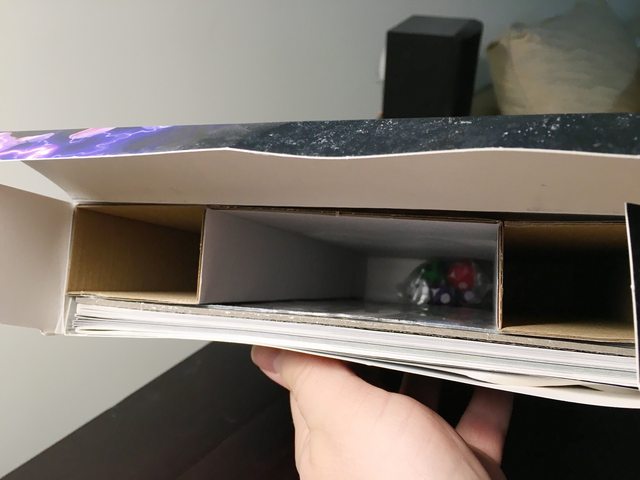
Most of the interior volume is actually wasted. The game materials take up a third of the box volume; the rest is a cardboard spacer.
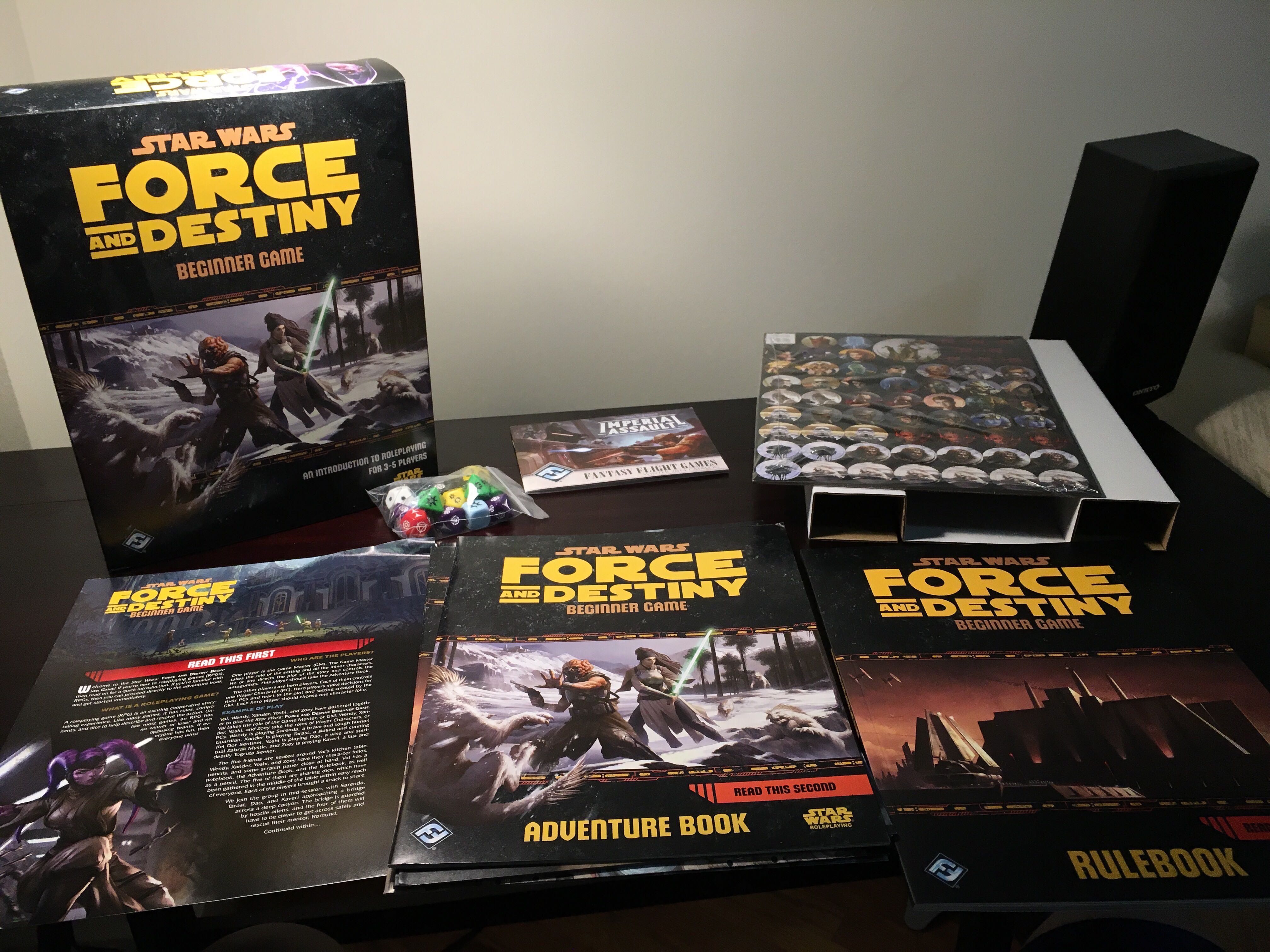
The box includes a "Read This First" flyer, a 32-page "Adventure Book" labeled "Read This Second", and a 48-page rulebook labeled "Read This Last". It also has a dual-sided map and a bunch of cardboard creature (and Destiny pool) tokens, four pregenerated character booklets, a set of the special dice FFG invented for their game line, and a booklet showing FFG's many other fine products which are available for purchase. There's also extra resources for free on their website: a 40-page followup adventure and two more pregenerated character booklets.
The "Read This First" flyer is your basic "what is a roleplaying game" and "here is a transcript of some people playing". The transcript doesn't go into detail about mechanics; it just talks about making skill checks and using Force powers without giving any numbers. On the reverse is a classic "opening scroll" showing the adventure hook:
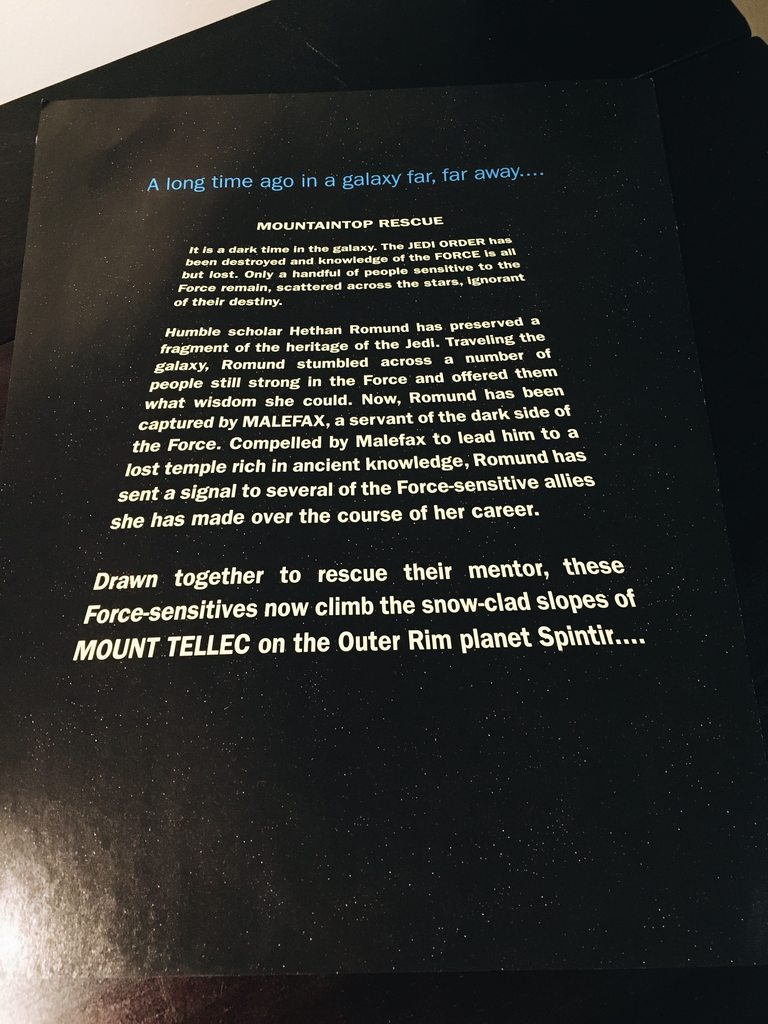
Next time, I'll discuss the pregenerated character booklets and the first few scenes of the Adventure Book.
Even computer-ghost Jedis are assholes
Original SA post
Even computer-ghost Jedis are assholes
Last time, we unboxed the beginner game and looked at the "Read This First" flyer. It had a one-paragraph "What is Roleplaying" section, an example of play, and a nice opening scroll for the players to look at.
The Adventure Book opens with the same "What is Roleplaying" section, along with the obligatory "pick one schmuck to be the GM"; all non-GMs are abjured not to read past that section, while the GM is instructed to just dive in; the Adventure Book is designed to teach everyone the rules. As a consequence, it is railroady as all get out.
The next page shows everything in the box (except the catalog of fine FFG merchandise) and also demonstrates three sidebar styles. Red sidebars contain text to be read aloud to the players; beige sidebars contain summaries of the mechanic being taught, and brown sidebars contain lore, stat blocks, and rules reminders. These sidebars will make up nearly half the book.
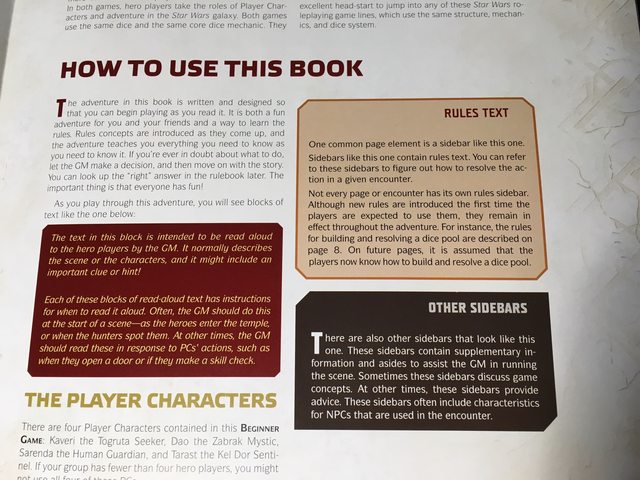
quote:
The available dice should be placed somewhere within easy reach of all players. The map can also be placed in between all players (with the Valley side showing), so everyone can easily see where the action is taking place. Each hero player should find the appropriate character token from among the available cardboard character tokens and keep it nearby. The hero players might wish to use these to represent their characters on the game map later during fight scenes! It would also be helpful for each player to have a pencil or pen and some scratch paper to take notes.

Then the GM is instructed to play the Star Wars opening theme and read aloud the crawl text (provided in a red sidebar) while the players look at the crawl text on the back of the "Read This First" flyer. I like a bit of ceremony as much as the next person, but this seems like it would get old pretty fast. The scenario is set during the Rebellion era; a handful of people have learned about the Force from a scholar named Romund, who has now been captured by a Dark Side user named
 Malefax
Malefax
 . The PCs have all gotten to this planet to rescue their friend, but somehow climbed up a mountain instead of taking a shuttle ride or something. As a result,
they take 2 strain
. Strain is the non-lethal damage type; every character has a strain threshold, above which they pass out. Players are instructed to mark down the strain on their character sheets; sure hope they have pencils, or these are going to become hard to read very soon.
. The PCs have all gotten to this planet to rescue their friend, but somehow climbed up a mountain instead of taking a shuttle ride or something. As a result,
they take 2 strain
. Strain is the non-lethal damage type; every character has a strain threshold, above which they pass out. Players are instructed to mark down the strain on their character sheets; sure hope they have pencils, or these are going to become hard to read very soon.
Encounter 1 begins!
Guess what, the climbing isn't over. This provides the game an opportunity to teach us how to perform skill checks, which means I should probably show you a character sheet.
The game comes with four pregenerated characters. Each one has a bit of backstory provided.
-
Sarenda, a
Human
Guardian: She grew up on a farm, found a lightsaber, and used it to scare off annoying boys. Her aunt said she should probably go learn how to use it, and sent her off to find Romund.
-
Dao, a
Zabrak
Mystic: Grew up in a monestary, ran away to see the galaxy. He fights with a walking stick, which somehow deals almost as much damage as Sarenda's lightsaber. He's friends with Kaveri.
-
Kaveri, a
Togruta
Seeker: She was a wilderness guide in the Outer Rim until Romund helped her figure out she had Force abilities. Since then she's become friends with Dao. She has a blaster rifle.
-
Tarast, a
Kel Dor
Sentinel: He's old enough to actually remember the Jedi Order, which is interesting because his species isn't as long-lived as humans. The Jedi told him he had Force abilities but that he was too old to join them. He went on the run after Order 66. He fights with a blaster pistol and lightsaber.
The website provides two additional character booklets for download.
-
Pon, a
Nautolan
Warrior: Born a slave, he lost his arm leading a slave revolt. He was purchased by Romund, who was "intrigued by his ability to survive wounds that should have killed anyone else," because apparently she's never heard of bacta. He also has a "relentless refusal to take anything seriously", which is mentioned at the same time Romund gives him a lightsaber she loots from a Jedi's grave.

-
Belandi, a
Mirialan
Consular: She used the Force to heal as part of a religious order, but had to go on the run after she refused to heal an Imperial officer who'd committed war crimes against her people. Romund helped her escape her homeworld. She fights with a blaster pistol.
Tarast's backstory also says he's spent 15 years on the run from the Empire, which is the closest thing we get to an actual date for this scenario; if we assume he went on the run right after Order 66, this puts us four years before the Battle of Yavin. (An alternative reading of his backstory gives 18 years, which pushes the scenario closer to Yavin, but eh.)
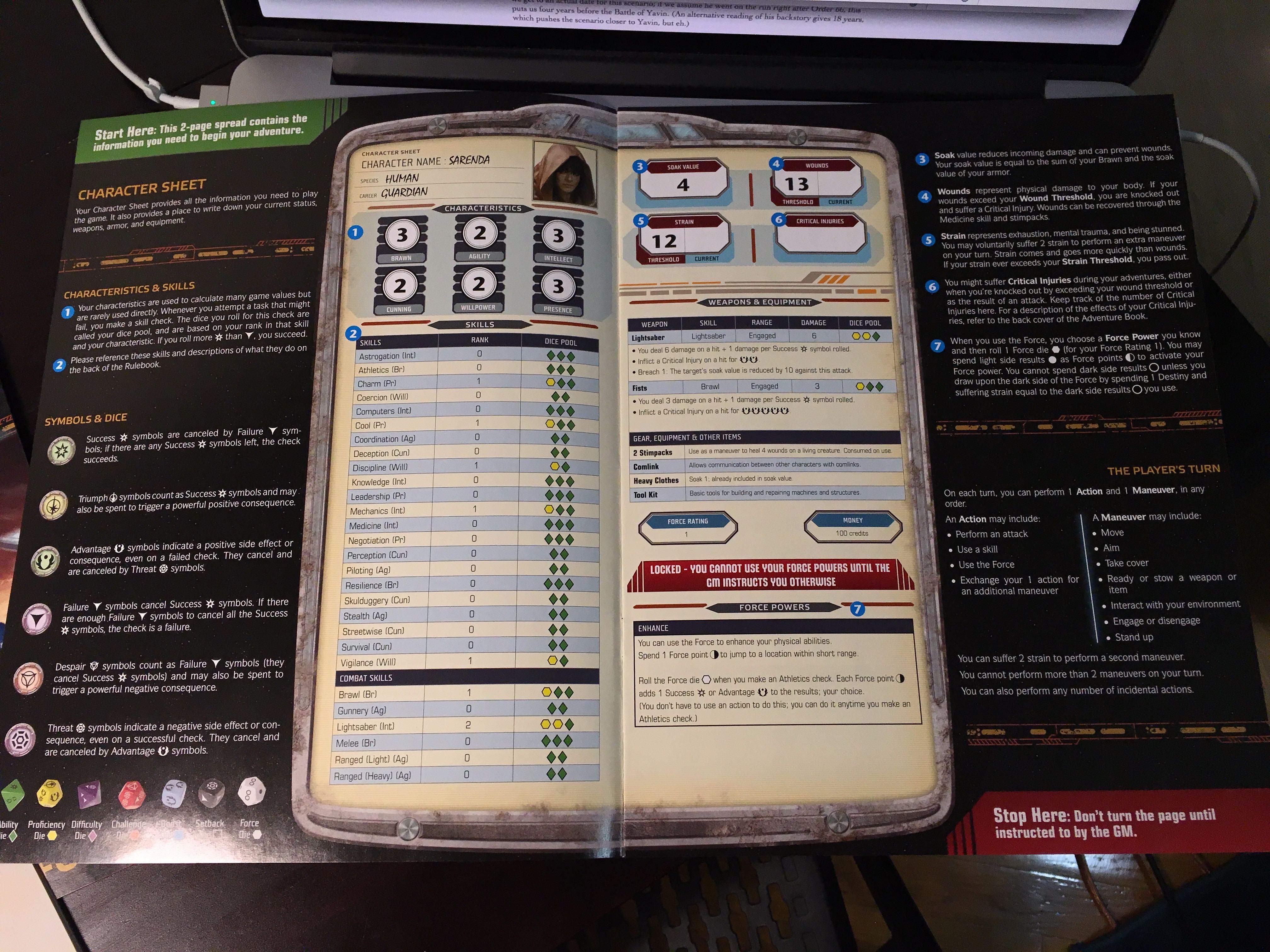
The character booklet puts the sheet in the center of a two-page spread, with each section numbered to correspond to explanatory text on the left and right. Where something is too wordy to put there (like skill definitions), it refers you to the reference pages at the back of either the Rulebook or Adventure Book. We also have a handy reference guide to the dice types and the symbols on them (more about this later) and the kinds of actions you can take on your turn.
Ok, back to the adventure.
quote:
You stand at the bottom of a steep stone rise clad in snow and ice. It's not especially tall, but you will need to brave the elements and exert yourself to reach the top. The path continues upward in a tight switchback exposed to the howling winds. To your left, several tall evergreen trees brush against the cliff face, where smaller trees cling to cracks in the rock. A more direct route would be to scramble straight up the rocks and ice to the valley above. In any event, you have to go up if you're going to rescue Romund. What do you do?
Going back to town and borrowing a light aircraft is not, unfortunately, one of the options. Whatever the PCs do, they'll need to make a skill check. Heading up the path is a Resilience check. Climbing straight up is Athletics , while "leaping from tree to tree" is a Coordination check. You can also "search for another path to the top" ( Survival ) or rig makeshift climbing gear ( Mechanics ). No matter which skill the PCs choose to use, the difficulty is Easy . Now it's time to build a dicepool.
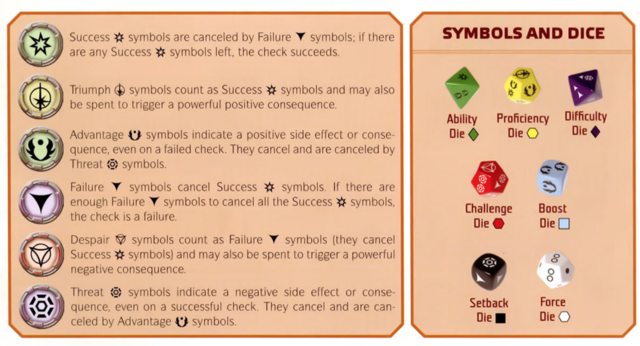
Let's say we're playing as Sarenda, since I already showed you her sheet above. If she climbs the cliff, she'll need to roll Athletics , which means three green Ability dice. However, if she somehow rigs climbing gear out of fallen branches and vines, she'll roll Mechanics , which is two Ability dice and one yellow Proficiency die.
The dicepools are already calculated here for us, but if they hadn't been, they're fairly straightforward to figure out. You look at the character's stat (Intellect is the stat for Mechanics), which is 3, and the skill rating, which is 1. You start out with the larger number's worth of green Ability dice, then upgrade the smaller number's worth of them to yellow Proficiency dice. If her skill rating was 2, she would have ended up with one Ability die and two Proficiency dice.
Then you add in one purple Difficulty die, roll them, and count up the symbols. There's six possible symbols, three good and three bad. Each one can cancel out one of the other kind.
If you don't happen to have FFG's special dice on hand and you don't want to pay $5 for their smartphone app, the full game provides a table to convert regular polyhedral dice into FFG symbols; this table isn't included in the beginner game.
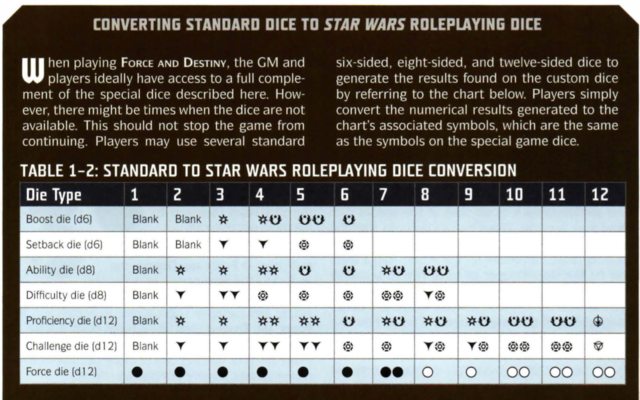
The green Ability dice will generate Success and Advantage symbols; hereinafter Ⓢ and Ⓐ because fuck if I'm going to embed their silly symbols all over the place. Ⓐ symbols are positive side-effects, and you can get and use them even if you don't have any successes. The yellow Proficiency die can also generate a Triumph Ⓣ, which is basically a critical hit. The purple Difficulty die generates Failure ⓕ and Threat ⓣ symbols, which counter Ⓢ and Ⓐ, while the red Challenge die is the negative equivalent of Proficiency and can generate a Despair ⓓ symbol. Luckily we won't be seeing any of those right now.
I just rolled Sarenda's Mechanics check; she got 2 Ⓢ, 3 Ⓐ, and 1 ⓣ. The ⓣ cancels out one of the Ⓐ, leaving her with 2 Ⓐ. Since she got a success, she managed to climb the mountain using her makeshift gear. The Ⓐ symbols can be cashed in for various benefits, but the text only explains one of them right now; every non-canceled Ⓐ can be used to heal 1 strain, while every non-canceled ⓣ makes the character suffer 1 additional strain.
Even if we fail our skill checks, we still make it to the top, because this is a railroad, but we're in poorer condition and we'll take a penalty going into the next check, so the GM is instructed to note down who succeeded and who failed.
Encounter 2 teaches opposed checks. A Jedi holocron (which is explained in a sidebar) reveals itself to the characters and will either welcome them to the ancient temple (if at least half the players succeeded on their climb check) or be an asshole.
quote:
"The climb seems to have nearly killed you, and the valley may finish the job. You are of no use; turn back. What possessed you to attempt the climb in the first place?"
Anyway, now the PCs get to interrogate the Gatekeeper for a bit and then try to convince him to help. This allows the players to learn opposed checks. The basic mechanic is you figure out what the defending character's dicepool would be, flip the dice to their opposites (good dice becoming bad and vice versa), then add them to the active character's dicepool. The Gatekeeper has only a few skills: Cool, Discipline, and Knowledge. The book lists several arguments the PCs might try to convince the Gatekeeper to help them out; they're allowed to try each of them once, unless they roll a ⓓ which would represent running out of time. Each strategy lists the Gatekeeper's dicepool in the "bad dice" format. The players must also add a blue boost die if they succeeded on their climb check, or a black setback die if they failed; these dice have two blank sides and a mixture of Ⓢ and Ⓐ (or ⓕ and ⓣ) on the other four sides. They add these dice only on the first checks they make. For each strategy, only one player can make the roll.
-
The PCs can flatter the Gatekeeper, rolling Charm against his Cool
-
They can try to deceive him about their intentions (I'm not sure why this is here, but whatever), rolling Deception against Discipline.
-
They can cite the Jedi Code to persuade him to help, rolling Knowledge vs Knowledge. The book notes that even if they fail this check, the Gatekeeper is still pleased they tried this approach, so if they got any Ⓐ results, they can add a blue boost die to all future checks in this scene.
-
They can threaten to desecrate the temple
 , rolling Coercion against Discipline and adding a black setback die because it's hard to threaten a hologram.
, rolling Coercion against Discipline and adding a black setback die because it's hard to threaten a hologram.
-
Lastly, they can lay out the reason they came and try to negotiate an alliance, rolling Negotiate vs Cool.
Depending on the tactics the PCs choose, they'll have to add at least one Difficulty die and at least one Challenge die to their pools. They may need to make a couple of tries.
If the PCs roll a ⓓ, this means a group of hostile NPCs have approached. Otherwise, if they succeed at one of these rolls, they secure the Gatekeeper's help for the future.
Next time: combat rules!